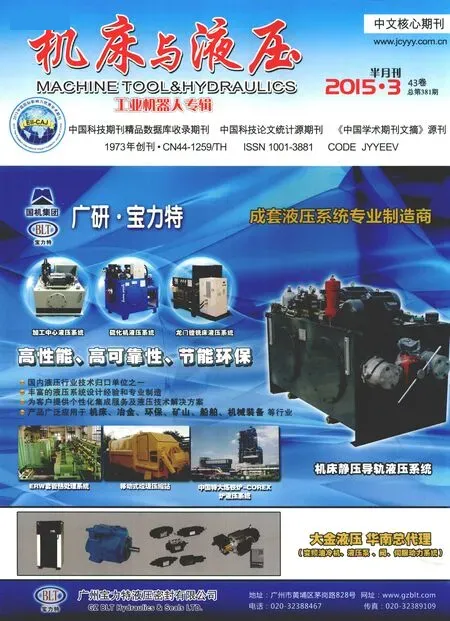Manufacturing of self-lubricating diamond tools with Ni-Cr alloy adding with Ni/C
Pu MENG,Rui-xia GAN
(Department of Mechanical and Electronic Engineering, Bengbu University, Bengbu 233030, China)
Manufacturing of self-lubricating diamond tools with Ni-Cr alloy adding with Ni/C
Pu MENG*,Rui-xia GAN
(Department of Mechanical and Electronic Engineering, Bengbu University, Bengbu 233030, China)
Ni-Cr alloy adding with Ni/C of 3%, 5% was utilized to braze diamond grains in protective furnace with the temperature 1 050 ℃ and holding time 5 min, respectively. Diamond morphology and the brazed joint microstructure were analyzed with the help of scanning electron microscope; the brazed joint hardness was measured by Vickers. The results show that Ni-Cr alloy adding with Ni/C has good wettability with diamond; it could achieve high strength bonding between diamond and brazing layer. Carbide crystallizes and nucleates on the surface of diamond has an orientation relationship with diamond surface. The Cr7C3morphology is hollow and clusters eutectic graphite forms in the brazing layer, which has a relationship with the adding Ni/C. There is small amount of Ni/C within brazing layer, the brazed joint hardness falls from 830 HV0.2 to 700 HV0.2, this is benefit to decrease the thermal stress and improve the protrusion of diamond in the later grinding.
Ni/C, Ni-Cr alloy, Brazing diamond
1 Introduction
Monolayer brazed diamond tools have some excellent advantages, such as high bonding strength, high grinding efficiency, no environment pollution and long service life; it has attracted much attention from scholars and experts at home and abroad to research and develop in recent years [1-2]. There are many papers on principle of brazing diamond, brazing technology, carbide morphology and orientation relationship between diamond and carbide [3-4]; however, it also has some disadvantages. Since the melt temperature of Ni-Cr brazing alloy is rather high, the thermal damage of diamond becomes very serious after brazing; in addition, the Ni-Cr brazing alloy has high strength and hardness, which leads to the increasing of brazing stress and decreasing the protrusion of diamond grain in the later grinding, meanwhile, it will increase the friction stress between grinding and brazing layer, and develop high temperature.
Lubrication condition has a great influence on the performance of brazed diamond tool, which relates to grinding force and service temperature. In order to improve the self-lubrication of sintering diamond tools, PAN Bing-suo [5], et al, developed a new self-lubrication pregnant diamond tool by adding graphite to matrix material. ZHU Dingyi [6-7], et al, prepared solid lubricating material of high resistance to high-temperature by compositing graphite and Ni-based material. Based on the reflection message, in this study, Ni-Cr brazing alloy added with Ni/C was utilized to braze diamond in hope of existing oversaturated carbon atom and graphite particles within brazing alloy during brazing. First, a part of carbide nucleates through the reaction between oversaturated carbon atom and Cr atom and grows on the surface of diamond grain. Then, the added C atom could suppress the changing of C atom from carbon to graphite. Finally, the residue of Ni/C not only increases the lubrication but also decreases the strength and hardness of brazing seam. For brazed diamond tools, it is not true that the higher the strength of brazing alloy the better for service life. For matrix of sintering diamond tools, SONG Yue-qin and WANG Qin-shen [8-9], et al, promoted opinions of weaken, which is different from the demand of increasing the strength of metal. However, it is not true that the less the better, it needs an appropriate value among strength, hardness and brittleness.
In this study, Ni-Cr brazing alloy added with Ni/C was utilized to braze diamond to change the strength and hardness of brazed joint, suppress the graphitization of diamond grain and reduce the overreaction. It has realistic significant to improve the performance of brazed diamond tools.
2 Materials and experiments
2.1 Materials
Diamond grains with grain size from 350 μm to 500 μm are applied. The metallic wheel substrate is made up of commercial Q235A steel. The commercial Ni-Cr-B-Si alloy powder is used as brazing alloy, whose composition is listed in Table 1.
Table 1 Chemical composition of Ni-Cr-B-Si brazing alloy (mass fraction)
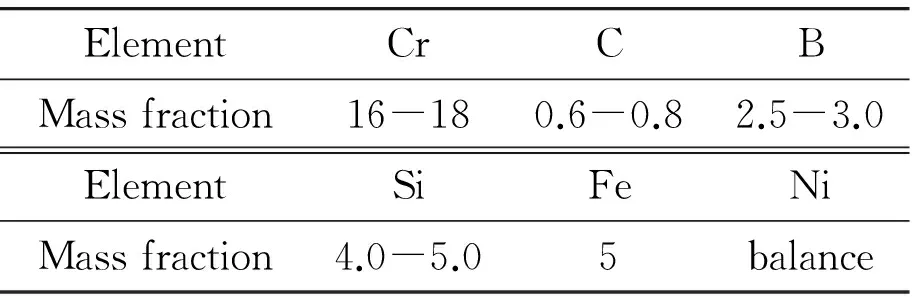
%
2.2 Specimen preparation
Before brazing, the content of Ni/C is measured by electronic balance with precision of 0.1 mg; the brazing alloy of Ni-Cr-B-Si added with Ni/C is mixed with ball mill.
In order to obtain good joining interface among diamond grain, brazing alloy and steel substrate, before brazing, the strict cleaning measures should be taken on all the materials to remove the impurities. Before the brazing, the diamond grains and Q235A steel are cleaned, respectively, in acetone by ultrasonic agitation and dried in air. Then the Ni-Cr-B-Si alloy powder added with 3% or 5% Ni/C is uniformly sprayed over the surface of wheel substrate, subsequently, the diamond grains are placed onto the surface of Q235A steel, as illustrated in Fig.1. Finally, the specimen was inserted into the protective atmosphere furnace. Brazing was carried out at 1 050 ℃ with the holding time of 5 min. The heating and cooling rates were kept at 10 ℃/min. Specimens were taken out along with the furnace cooling to room temperature.
Before brazing, the content of Ni/C was measured by electronic balance with precision of 0.1 mg; the brazing alloy of Ni-Cr-B-Si added with Ni/C was mixed with ball mill.
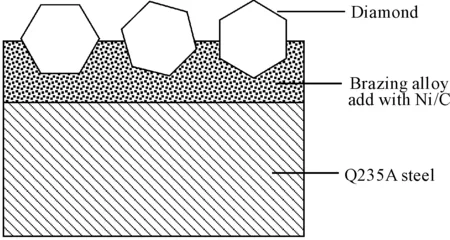
Fig.1 Schematic showing the brazed diamond grain specimen
2.3 Measuring method
In order to study the morphology of diamond, the specimens were deep etching with aqua regia and electrolysis. Specimens for metallographic examination were prepared according to the stand procedures. Brazed interface was characterized by using a JEOL JSM-3400 scanning electron microscopy (SEM). A KEVEX energy dispersive X-ray spectroscope was utilized to determine the chemical compositions. The hardness of brazed joint was measured with a HXD-1000TC Vickers.
3 Results and discussion
3.1 Macro morphology of brazed diamond
The specimens of diamond joints brazed with Ni-Cr-B-Si alloy powder added with Ni/C were analyzed based on SEM, the results show that it could achieve chemical and metallurgical bond between diamond grains and Q235A steel, no diamond grain falling is observed. Figure 2 shows the cross section morphology of diamond joint brazed with Ni-Cr-B-Si alloy powder added with 3% Ni/C, the protruding part of the specimen is diamond grain with the exposure height of 50%. The brazing alloy has a good climbing altitude, which is benefit to improve the holding force between diamond grain and brazing layer. Compared with specimen of diamond joint brazed with Ni-Cr-B-Si alloy powder, the brazing alloy of Ni-Cr-B-Si alloy powder added with Ni/C still has good wettability to diamond. Therefore, it could be used to braze diamond.
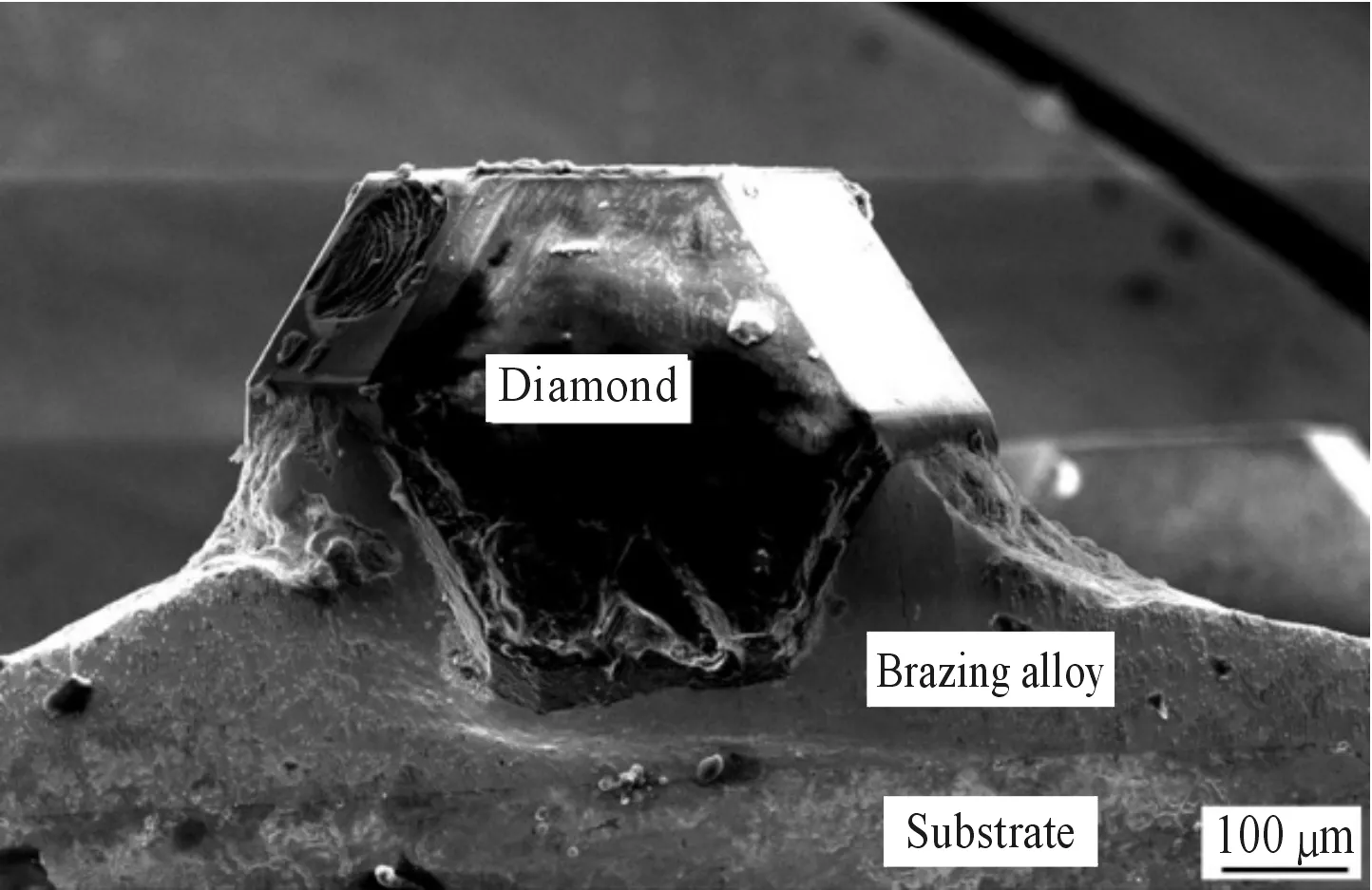
Fig.2 Cross section morphology of brazed diamond joint
3.2 Microstructure of brazed joint added with Ni/C
Figure 3 (backscattering) shows the microstructure of diamond joint brazed with Ni-Cr brazing alloy added with 3% Ni/C. The black is diamond, the white is Ni-Cr brazing layer added Ni/C. After brazing, it forms many particles compounds within brazing layer, when the distance is over 100 μm, the content of particle compounds becomes large; however, when the distance is not beyond 100 μm, there are a few particle compounds. It exits black particles in Fig. 3, whose composition is the same with diamond, this illustrates that the black particles is Ni/C which is remained in brazing layer after brazing.
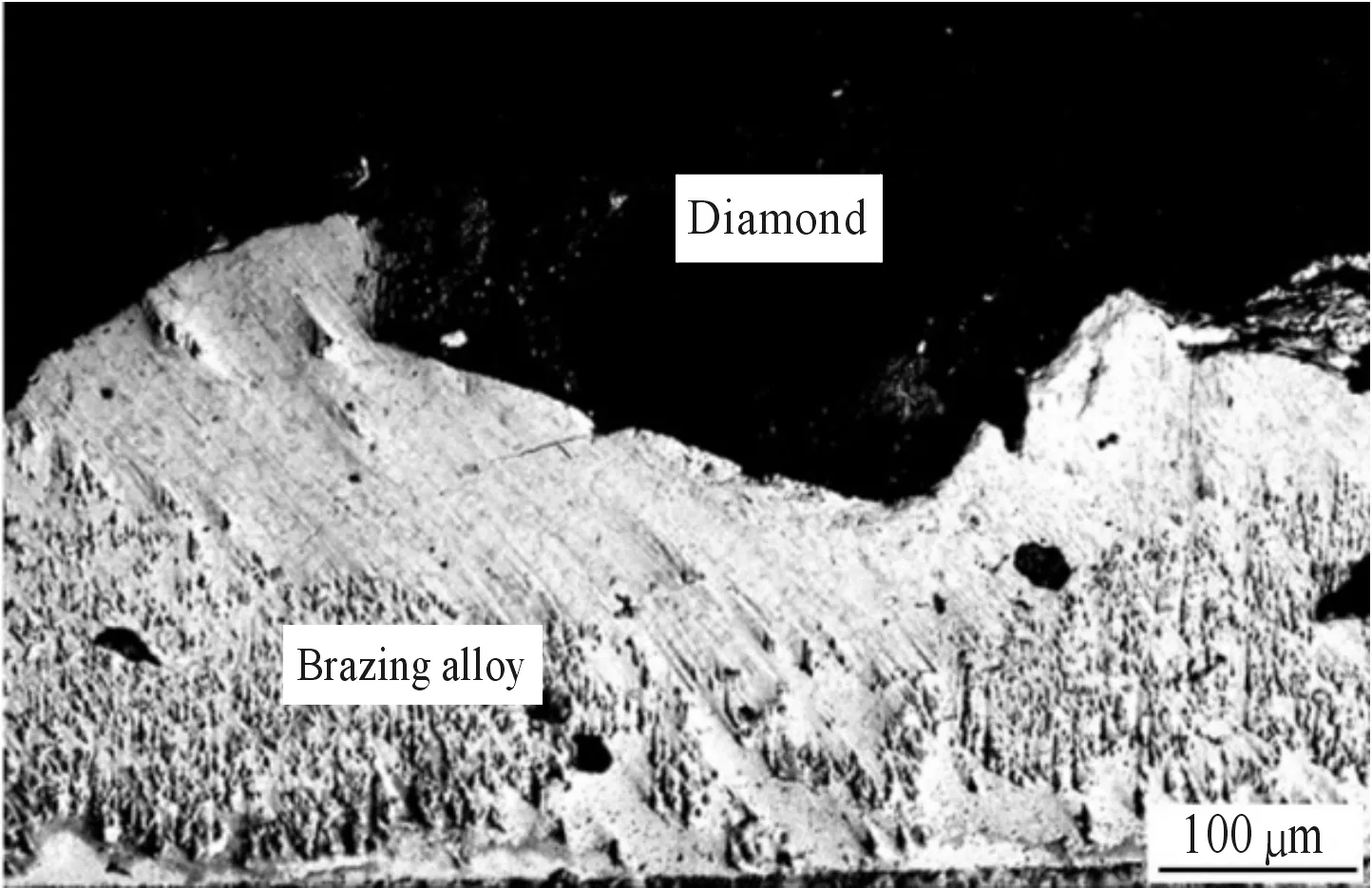
Fig.3 Microstructure of brazed joint
The interface between diamond and brazing alloy of Ni-Cr alloy is shown in Fig.4. It could be seen that the carbide is formed on the surface of diamond and the carbide has the same growth direction along the diamond surface, which has an orientation relationship with atom arrangement of diamond surface. These are the similar results as brazing diamond with Cu-Sn-Ti brazing alloy, carbide TiC has a certain orientation relationship with atom of diamond surface, which mainly associates with the atom arrangement of single crystal diamond surface [10]. These results could further confirm that the chemical metallurgy bond is formed between C atom of diamond surface and element Cr within brazing alloy. This could be used to explain why the quantity of particle compounds is small in the region where the diamond grain is not beyond 100 μm; however, the content of particle compounds becomes large when the distance exceeds 100 μm. On the surface of diamond, active element gathers to the surface of diamond by uphill diffusion, it forms chemical metallurgy bond with diamond, carbide nucleates and grows on the surface of diamond. The content of carbide is small when the distance is no more than 100 μm, this could not only increase the wettability of brazing alloy to diamond, at the same time, it could also decrease the overreaction of diamond, and reduce the performance degradation of diamond, this will be helpful to increase the service life of brazed diamond tolls.
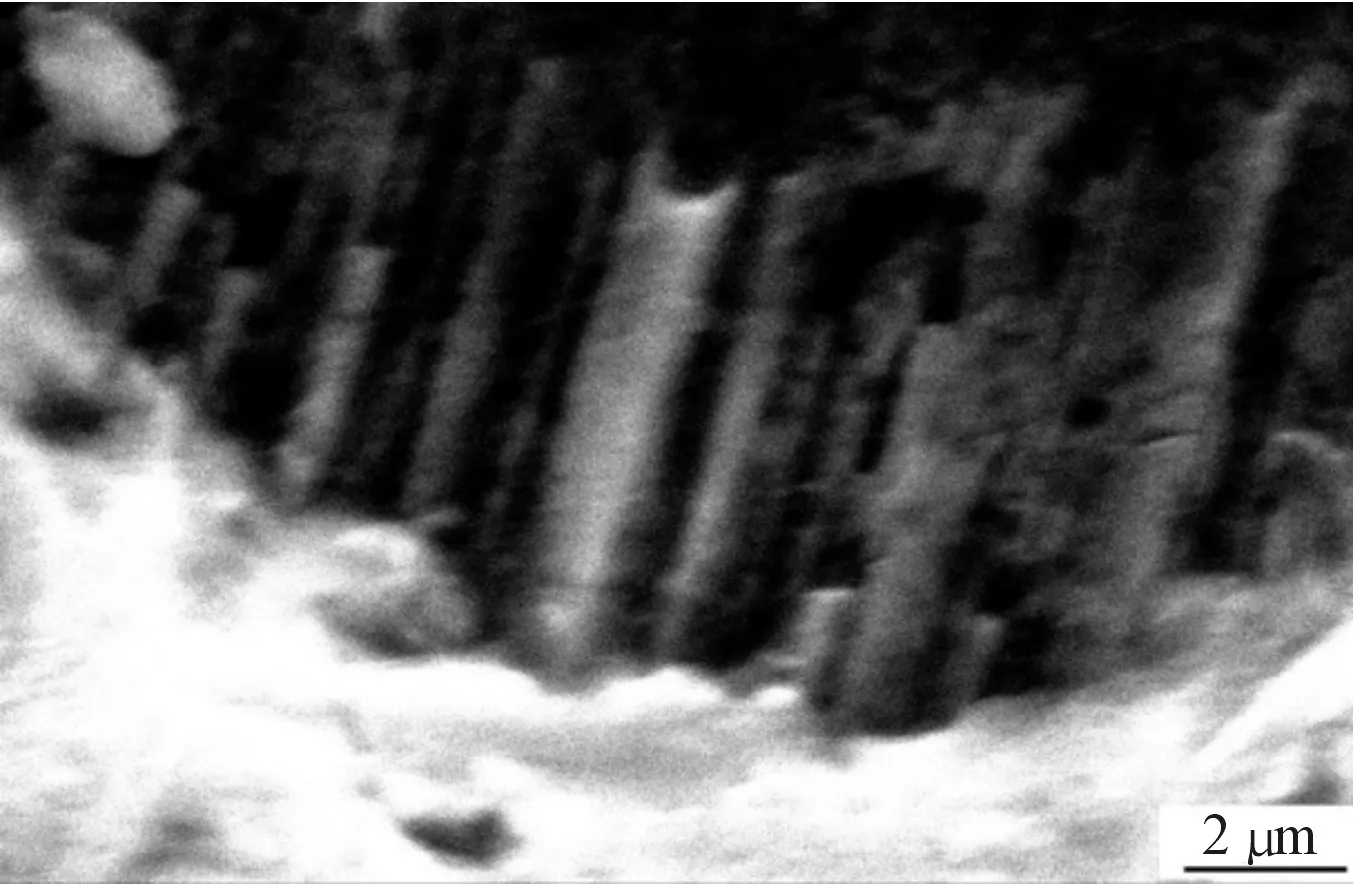
Fig.4 Order arrangement of carbide on the surface of diamond
The diamond morphology which is deeply etched by aqua regia is shown in Fig.5. A is diamond and B is diamond surface. From this figure, it could be seen that the abundant compounds are formed on the surface of diamond. Table 2 shows the chemical composition of A, B and C, the analysis reveals that B is carbide Cr7C3, C is cluster carbide. When the diamond is brazed with Ni-Cr alloy without Ni/C by induction heat with protection atmosphere and vacuum, all carbide Cr7C3formed on the surface of diamond is sold. According to Fig. 5, it could be seen that when the diamond is brazed by Ni-Cr alloy added with Ni/C, the diamond morphology will become hollow, this illustrates that the sharp transition of carbide Cr7C3has a relationship with Ni/C. Analysis suggests that when the diamond is brazed by Ni-Cr alloy added with Ni/C, the carbide Cr7C3nucleates will be formed on the surface of graphite with screw dislocation, this results in the preliminary formation of hexagonal lattice carbide Cr7C3grows according to spiral pattern, the low-melting point liquid alloy is encircled by coagulated Cr7C3, spiral step could continue to grow by absorbing neighbor atoms. The core of screw dislocation is separated from the boundaries, during the process of crystal growth by adsorption atom of spiral step, crystal center keeps hollow and is suffused with alloy liquid. Eventually, the hollowing Cr7C3is formed. As seen in Fig. 5, the fascicular filamentary material is formed. Based on the energy spectrum test, the main component of fascicular filamentary material is C. Combined with phase diagram of Ni-C, at the high temperature, the concentration of C in brazing alloy decreases with the decrease of temperature; during the eutectic transformation, it forms eutectic graphite of fascicular filamentary, therefore, one could assume that the filamentary material is graphite.
Table 2 Chemical composition of each point (atomic fraction)
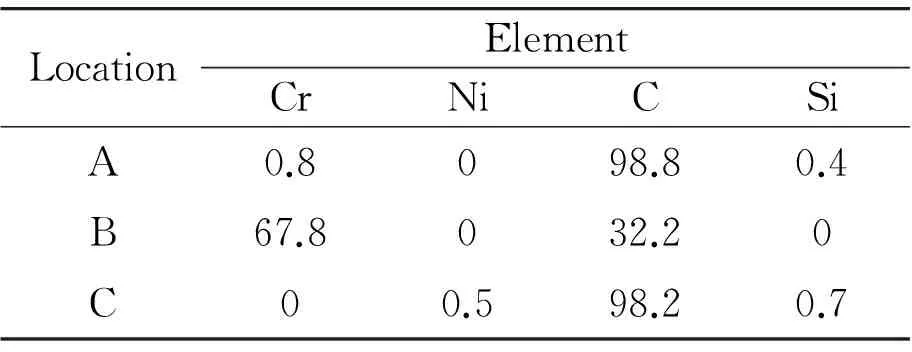
%
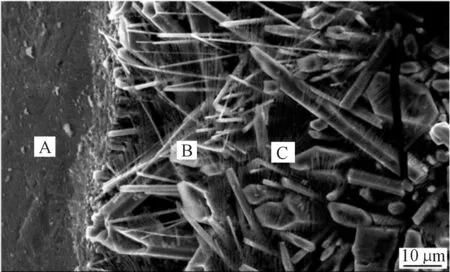
Fig.5 Morphology of product on the surface of diamond after brazing
When diamond grains is brazed by Ni-Cr alloy without adding Ni/C, under the action of infiltration of Ni and Cr, the diamond will be translated into graphite by dissolving and diffusing C on the surface of diamond. According to the chemical reaction of diamond translating into graphite, it could find that the addition of Ni/C can restrain the translation process of diamond to graphite; at the same time, graphite can restrain the excessive interface reaction between diamond and brazing alloy, this will be helpful to reduce the performance degradation of diamond.
Fig. 6 shows the microstructure of brazing alloy of diamond joint brazing with Ni-Cr alloy added with Ni/C, the black material is formed in brazing alloy, combined with EDS, it will be confirmed that the black material is C. This illustrates that it has remaining Ni/C in brazing alloy after brazing. Remaining graphite could not only decrease the hardness and strength of brazing alloy, but also decrease the residual stress formed in brazing process.

Fig.6 Microstructure of brazing alloy
3.3 Seam hardness and strength analysis
Under the same brazing parameters, the residual stress and wear of diamond has a close relationship with the strength and hardness of brazing layer. The hardness of brazing layer without adding Ni/C is about 820 HV0.2,however, when the brazing alloy is added with 3% Ni/C,the hardness of brazing layer decreases to 700 HV0.2. The hardness of brazing layer decrease with the increase of Ni/C with in brazing alloy, this is benefit to decrease the residual stress and the increase the output of diamond.
Fracture experimental test is used to measure the strength of brazed diamond joint, lateral stresses is applied to the diamond grain of sample added with 3% Ni/C. The results show that there is no diamond grain falling off, at the same time, the fracture is all brittle fracture. It fully demonstrates that the strength between diamond and brazing alloy meets the requirement of brazing diamond tool.
3.4 High temperature brazing diamond
Fig. 7 shows the diamond morphology corroded by aqua regia after brazed at 1 100 ℃ for holding 10 min. Diamond completes the morphology, and the abundant of carbide is formed on the surface of diamond; this further illustrates that the chemical reaction between adding Ni/C and active element Cr could be formed and carbide will nucleate on the surface of diamond. Diamond morphology is corroded by electrolysis, as shown in Fig.8. The diamond is almost completed and it has trail of interface reaction; however, the dissolution of diamond is not too much, this illustrates that the graphitizing of diamond and interface reaction get decreased when diamond is brazed by Ni-Cr alloy added with Ni/C, the added Ni/C could restrain the translation of diamond to graphite and increase the strength of diamond.
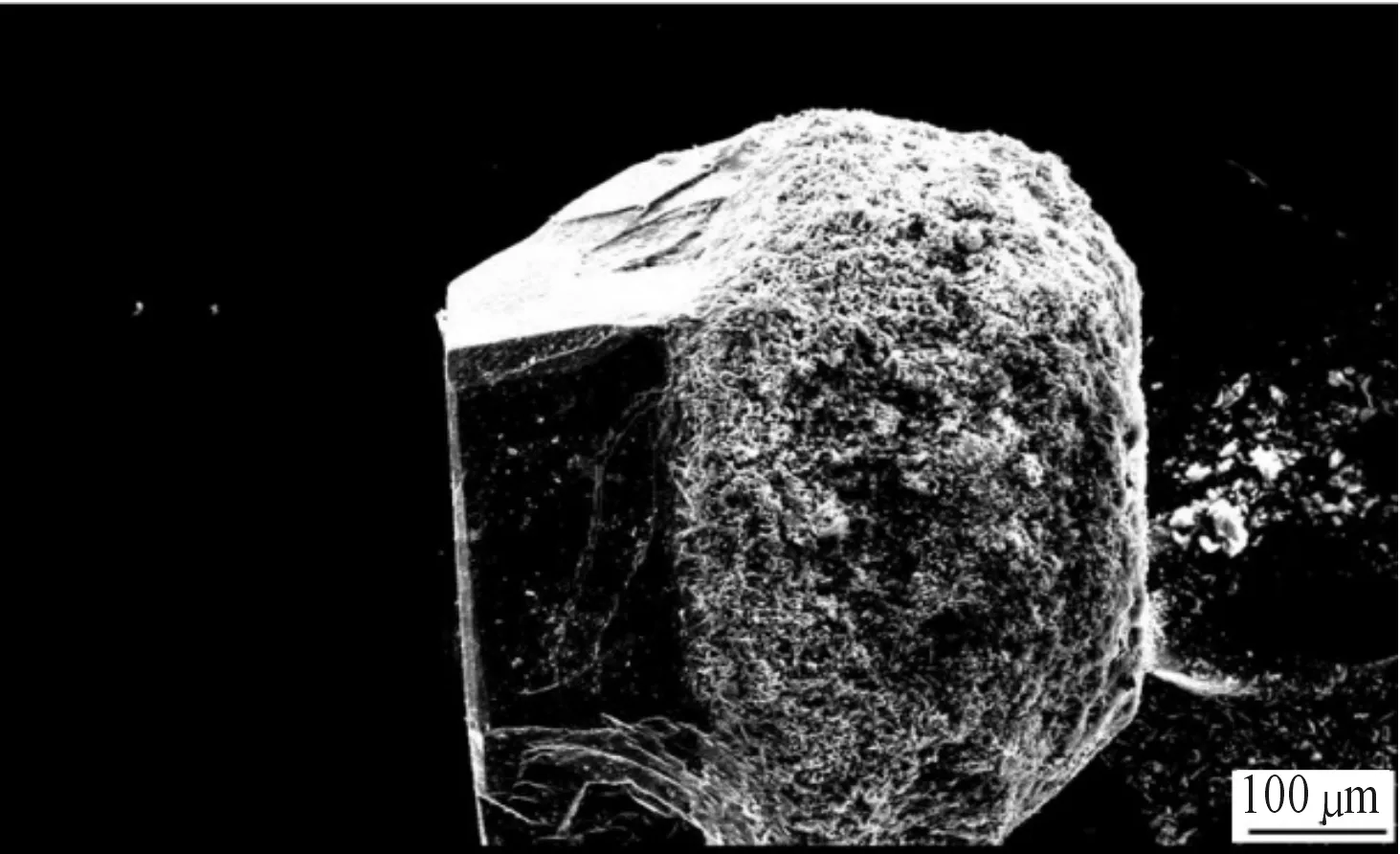
Fig.7 Diamond morphology corroded with aqua regia after brazed at 1 100 ℃
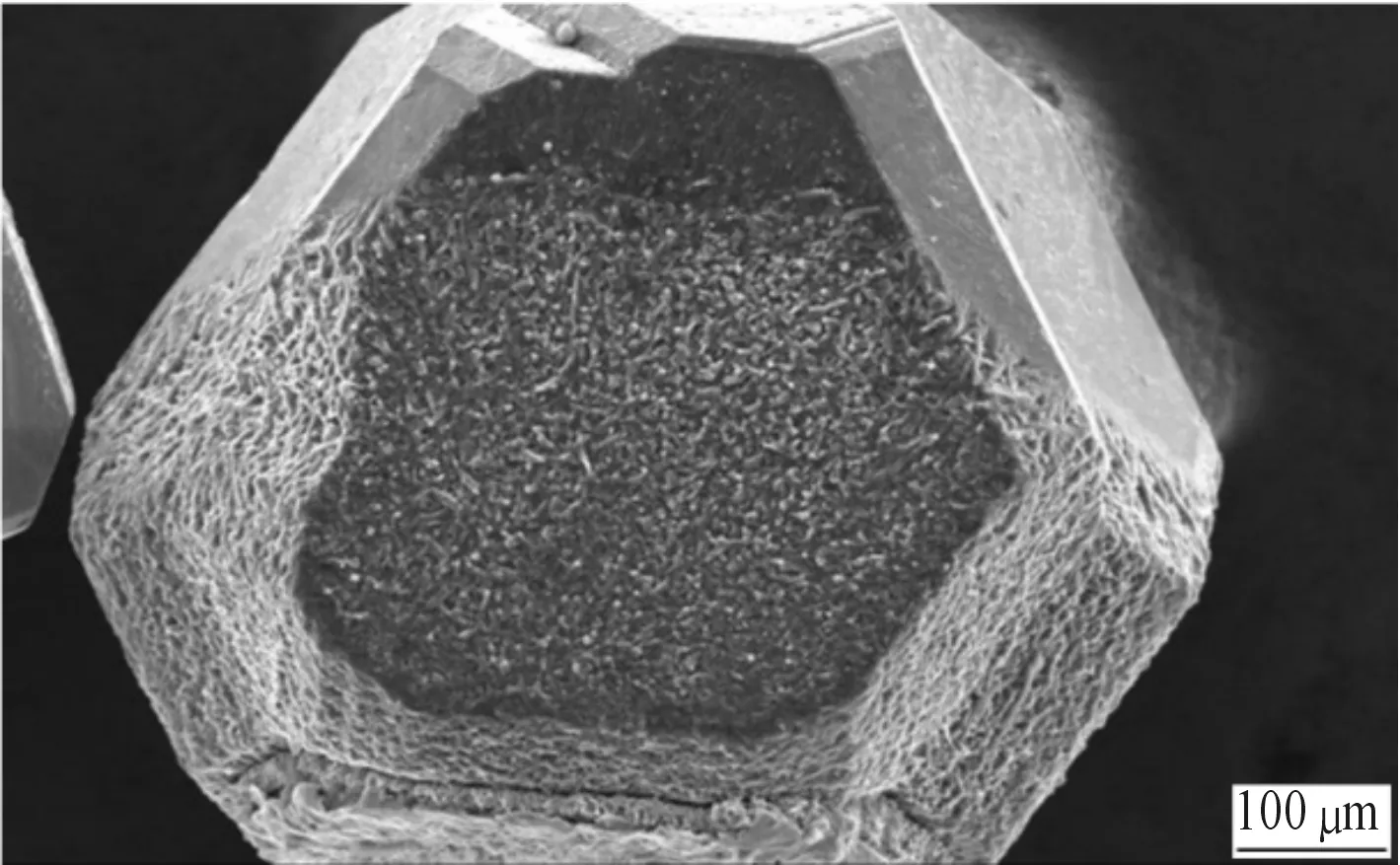
Fig.8 Diamond morphology corroded with electrolysis after brazed at 1 100 ℃
4 Conclusions
When diamond is brazed by Ni-Cr brazing alloy added with Ni/C, the brazed alloy has good wettability to diamond, it could firm the connection between diamond and brazing layer. It has a few of remained Ni/C in brazing layer, which could decrease the graphitizing of diamond and brazing residual stress, the hardness of brazing layer decreases from 820 HV0.2to 700 HV0.2。
When Ni-Cr brazing alloy added with Ni/C is utilized to braze diamond, the carbide has a certain relationship with the atom arrangement on the surface of diamond, the morphology of carbide Cr7C3could transform from solid to hollow, at the same time, fascicular filamentary material is formed in brazing layer.
Acknowledgements
This paper is supported by Natural Science Foundation of Bengbu University (No.2015ZR09).
[1]Khalld F A, Klotz U E, Elsener H R, et al. On the interfacial nanostructure of brazed diamond grits [J]. Scripta Materialia, 2004, 50: 1139-1143.
[2]Chattopadhyay A K, Chollet L, Hintermann H E. Experiment investigation on induction brazing of diamond with Ni-Cr hard-facing alloy under argon atmosphere [J]. Journal of Materials Science, 1991, 26: 5093-5100.
[3]Sung J C, Sung M. The brazing of diamond [J]. International Journal of Refractory Metals and Hard Materials, 2009, 27(2): 382-393.
[4]LU Jinbin,TANG Feng,MENG Pu,et al. Thermal damage analysis of vacuum brazing diamond with Ni-Cr alloy [J]. Transactions of the China Welding Institution,2010,31(8):25-28.
[5]Lu jinbin, Xi yanjun, Wang zhixin. Carbide growth and orientation relationship of vacuum brazing diamond with Ni-Cr alloy [J]. The Chinese Journal of Nonferrous Metals, 2010, 20(1): 126-142.
[6]Pan bingsuo, Fang xiaohong, Yang kaihua. Elementary Study on Self-lubricating Material for Impregnated Diamond Bit [J]. Exploration Engineering, 2009, 1: 76-78.
[7]Zhu dingyi, Guan xiangfeng, Dui weizhen, et al. Preparation and Structure Property of High-temperature Self-lubricating Ni-graphite Alloy by Melting Method [J]. The Chinese Journal of Nonferrous Metals, 2004, 14(5): 707-712.
[8]Yin yanguo, Liu junwu, Zheng yexiang, et al. Effect of Graphite on the Friction and Wear Properties of Cu Alloy-Matrix Self-Lubricating Composites at Elevated Temperature [J]. Tribology, 2005, 25(3): 216-220.
[9]SONG Yueqing,GAN Changyan,XIA Zhihua,et al. Study on the weakening of the diamond too matrix performance [J]. Journal of Syntheic Crystal, 1998, 27(4): 232-236.
[10]WANG Qinshen,ZUO Hongsen,SONG Cheng. About the relation between the properties of diamond saw blade and the binder [J]. Journal of Zhengzhou Polythnic Institute, 2002, 18(3): 1-3.
摘要:种鹅的听觉灵敏、警惕性很强,易受到惊吓发生应激反应而改变整车的产蛋规律。传统种鹅选育方法是根据鹅的外形体貌对鹅分别进行编号登记,并在不同的生长发育阶段连续多次进行选择,逐只记录每只鹅的产蛋情况。为了解决传统种鹅育种方式低效、可靠性低等问题,结合气动技术、机构设计、光电检测及电子识别等技术,设计并开发了一种新型种鹅智能选育系统育种箱,其功能是在群体之中区分个体产蛋情况的优劣,对种鹅产蛋情况进行自动智能检测,进而优选高产种鹅,提高育种效率。
关键词:种鹅;自动识别;机构设计;智能选育
向NI-Cr合金中添加Ni/C制备自润滑金刚石工具
孟普*,甘瑞霞
蚌埠学院 机械与电子工程系, 安徽 蚌埠233030
利用添加3%、5%的Ni-Cr合金在保护气氛炉中制备金刚石试样,钎焊温度为1 050 ℃,保温5 min。采用扫描电镜分析钎焊金刚石形貌和钎缝的微观组织,维氏硬度计测量接头的硬度。结果表明:添加Ni/C的Ni-Cr合金对金刚石具有较好的润湿性,可以实现高强度连接,碳化物在金刚石表面形核和结晶长大,与金刚石表面的原子分布具有一定位向关系。钎缝中形成的空心Cr7C3和簇状共晶石墨与添加的Ni/C有关,钎焊层中有少量Ni/C剩余,硬度从830HV0.2降低到700HV0.2,这有利于降低钎焊热应力和金刚石后期的出露高度。
Ni/C;Ni-Cr合金;金刚石
(Continued from 92 page)
一种鹅智能选育系统的设计与开发
张峰,杨岩*
重庆理工大学 机械工程学院,重庆400054
27 January 2015; revised 15 March 2015;
Pu MENG, Assistant.
E-mail: mengpu2005@126.com
10.3969/j.issn.1001-3881.2015.18.018 Document code: A
TG401
accepted 8 June 2015
Hydromechatronics Engineering
http://jdy.qks.cqut.edu.cn
E-mail: jdygcyw@126.com
- 机床与液压的其它文章
- Vibration response analysis of a lathe spindle by using the ANSYS finite element method
- Car following model with consideration of the vehicle’s mechanical inertia effect and its stability analysis
- Software design for spur gear tooth thickness based on MATLAB/GUI
- Dynamic study on ultrasonic horn
- Analysis and research of OPC technology in coal mine monitoring data transmission system
- Based on Cortex-M4 torus worm tester full closed loop control system

